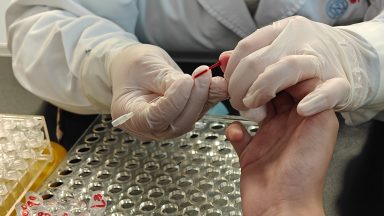
Walking pneumonia is on the rise this season, according to multiple reports. Children are primarily getting infected with the ilness, which is caused by mycoplasma pneumonia. So, parents want to know how they can protect their child from contracting it and what treatments are available.
According to the Centers for Disease Control and Prevention, “M. pneumoniae infections are generally mild and mostly present as a chest cold but may also present as pneumonia. … When an M. pneumoniae infection progresses to pneumonia, it’s typically a less severe form of bacterial pneumonia commonly referred to as ‘walking pneumonia.'”
Learn more about mycoplasma pneumoniae, how it spreads and how to treat it, here.
"If you or your kid has a cough that's been lingering, it could be a case of walking pneumonia. Cases are rising across the U.S."https://t.co/FPnxt9kXT1
— Ian Weissman, DO (@DrIanWeissman) October 31, 2024
What Is Mycoplasma Pneumoniae?
According to the CDC, M. pneumoniae, a.k.a mycoplasma pneumoniae, “is a bacterium that can infect different parts of the body.”
“M. pneumoniae is a type of Mycoplasma that can cause respiratory tract infections,” the CDC’s website reads. “The bacteria can damage the lining of the respiratory tract, including the throat, windpipe, and lungs.”
How Does M. Pneumoniae Spread?
M. pneumoniae îs a common infection, per the CDC, and can spread through respiratory droplets. An uninfected person needs to inhale the droplets from an infected person who sneezes or coughs.
Around 2 million cases occur every year in the United States. The bacterium re-emerged around the world in 2023 following the COVID-19 pandemic.
The infection tends to spread in crowded spaces, such as in schools, nursing homes or college dorms and halls, per the CDC.
Mycoplasma Pneumoniae Symptoms
The most common symptoms caused by mycoplasma pneumoniae are a fever, a cough and a sore throat. The CDC notes that the onset of symptoms are typically gradual.
Mycoplasma Pneumoniae Treatments
According to the CDC, most people infected with mycoplasma pneumoniae don’t need medicine and can recover on their own. However, antibiotics are also prescribed to certain patients. Macrolides (such as azithromycin) are the most common antibiotic chosen by healthcare providers to treat the illness.